CES 2007 Part I: Convergence Happened and the Most Impressive Demo of CES
by Anand Lal Shimpi on January 11, 2007 6:53 PM EST- Posted in
- Displays
Corsair's Prepping for the Memory Boom
Our first meeting of the show was actually not with a CE company at all, rather a PC memory company: Corsair. Our discussion with Corsair would prove to be something of a trend for this year’s CES, as it centered around Windows Vista and its impact on the PC market in general.
Out of all of the manufacturers that will be affected by Vista and its hardware requirements, it is the memory manufacturers that stand to benefit the most. Vista needs more system memory, can benefit from Ready Boost enabled USB flash drives, supports Hybrid drives and Intel’s on-motherboard flash technology (Robson). While CPU and GPU requirements are greater with Vista, given that you can get premium certification with Intel’s integrated graphics, the requirements aren’t all that high. What Vista will do, more than anything, is help sell more memory - whether it is in the form of DDR2 or flash devices.
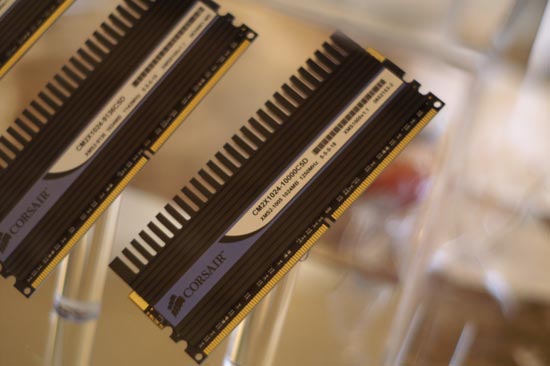
Corsair had its Dominator line of memory on display, including its recently announced PC10000 offering. But it wasn’t DDR2 that was the most interesting at Corsair’s suite, rather Corsair’s Flash memory lineup.
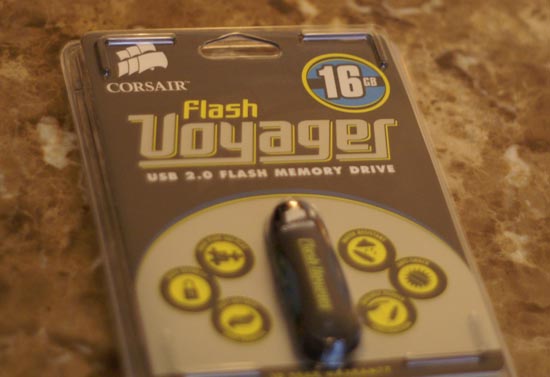
In the past year we have seen Flash drives get very big, very quickly. Corsair showed us its 16GB MLC based NAND flash, which we will be reviewing soon, as well as its faster 8GB SLC based USB drive. The difference in performance between SLC and MLC is forcing Corsair to brand its SLC drives differently, which you can see below:
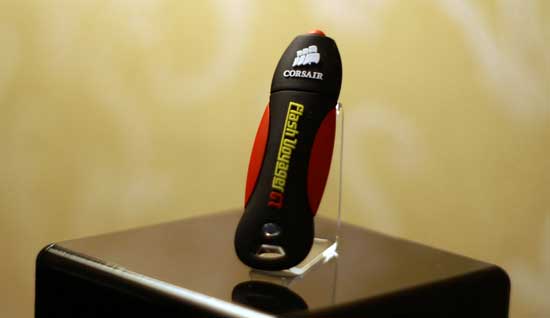
Flash Voyager GT drives will use SLC flash
In the future, all SLC flash based devices will have the “GT” suffix while MLC devices won’t. The idea is that MLC devices are significantly slower than their SLC counterparts, which is the tradeoff you make when getting twice the storage capacity thanks to being able to store multiple bits per cell.
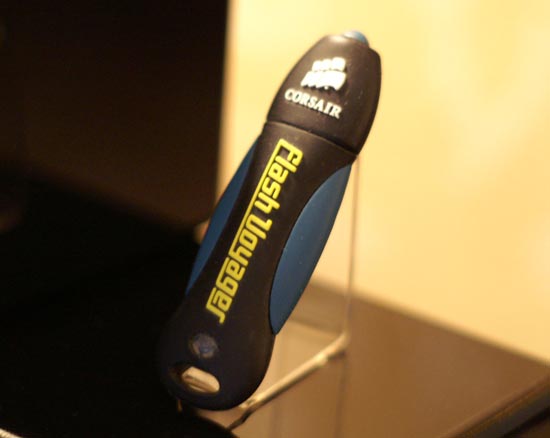
Regular Flash Voyager drives will be MLC only
While USB drives have become a clear commodity, Corsair is doing its best to differentiate in a very different manner than much of its competition. When Corsair introduced the Flash Voyager what set it apart was the fact that it was a bit more rugged than its competition. While everyone else is trying to make USB drives smaller, Corsair has been hard at work to make their drives more rugged. Enter the G-Force:

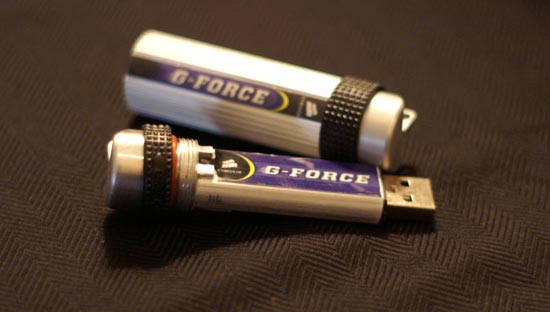
This waterproof drive takes rugged to a new level and feels like it would be at home sitting in a Hummer.
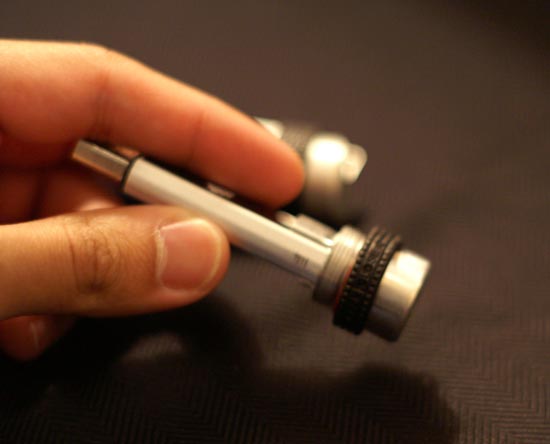
The G-Force is by no means small, but it actually feels right in your hands and if you’re prone to dropping/breaking things it’s not a bad option. At the show Corsair only had a prototype, but the final version will be available in a matter of weeks. Corsair is convinced that NVIDIA won’t be upset by the naming of the product, as there’s no “e” in its G-Force USB drive.
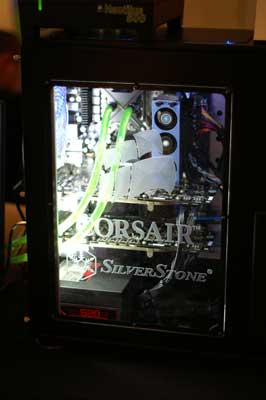
Speaking of NVIDIA, Corsair was also proudly showing off its 620W power supply running a pair of GeForce 8800 GTXs, bringing to light the fact that you don’t need an 800W+ PSU to run NVIDIA’s highest end configuration, you just need an efficient PSU.










18 Comments
View All Comments
Johnmcl7 - Friday, January 12, 2007 - link
Can't say I agree with that, while LCDs are thin and light their image quality leaves a lot to be desired especially given the superior image quality of the CRTs they've effectively replaced.John
PrinceGaz - Sunday, January 14, 2007 - link
That very much depends on the type of LCD panel used. Maybe it's because my Mitsubishi 2070SB CRT display is about four years old and isn't as good as it used to be, but the overall image quality (including colour reproduction) of my new HP LP2065 which uses an S-IPS LCD panel is just as good as it. The response-time is also sufficiently fast that their is no visible blurring of fast moving images. And the 2070SB wasn't some cheapo CRT either, it was one of the best 20" visible CRT monitors you could get.The fact that the LP2065 was just a little over half the price of the old 2070SB actually makes modern LCD displays seem superior to CRTs, especially when the lower power consumption is factored in. It is also slightly (ahem!) less bulky and heavy than the old CRT monitor. It makes me wish I'd switched to an LCD sooner except of course that even a year or two ago, the picture quality of the best LCD panels wasn't anywhere near what it is today.
Give a *good* (in other words one that does not use a TN panel) LCD display a chance and you'll probably be surprised.
msva124 - Monday, January 15, 2007 - link
Does it scale well to different resolutions? I.E. for gaming.tumbleweed - Thursday, January 11, 2007 - link
"the display is superb, making it very similar to reading pages in a regular book"Hardly. It's dark grey on light grey, thus having less than stellar contrast. No, this really isn't similar to reading a regular book; it's similar to reading an ATM receipt. Once they get it to the point of true blank on something resembling white, then we can talk. Other than that, I'll admit it's nifty, but the display quality ain't there yet.
msva124 - Thursday, January 11, 2007 - link
OMG! It's almost as good as one as those CRT things that Nostradamus said would be here in the year 3000!GhandiInstinct - Thursday, January 11, 2007 - link
I AM SOLD ON OLED!!!!! Come get me!BladeVenom - Friday, January 12, 2007 - link
Last time I checked, OLED displays had a very short lifespan. That may be OK if you don't use it much, or like replacing your monitor every year, but I think many will have a problem with that.psychobriggsy - Friday, January 12, 2007 - link
They've even got blues up to >30k hours now. That's a lot of TV watching, although some people sure do like to watch TV all day.Anyway, I'm sure I read that these Sony displays used a single colour OLED throughout, with colour filters on top. White OLEDs can have very long lives. If they're using 100k hour OLEDs, and you have the TV on for 10 hours a day because you cannot bear the idea of not having it on, then that is 30 years before the display is ~half as bright as originally. I think that predicting television display technology in 2037 will be quite difficult.
I'm just hoping that one day OLEDs will actually really be available in large displays! Can't wait yet another 5 years...